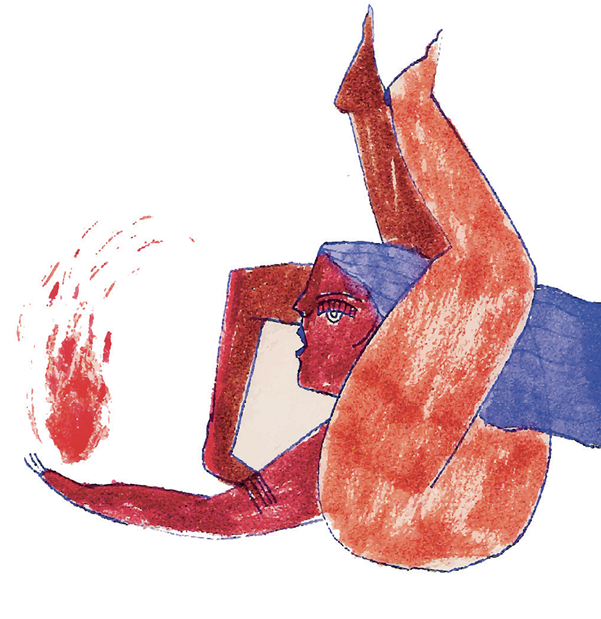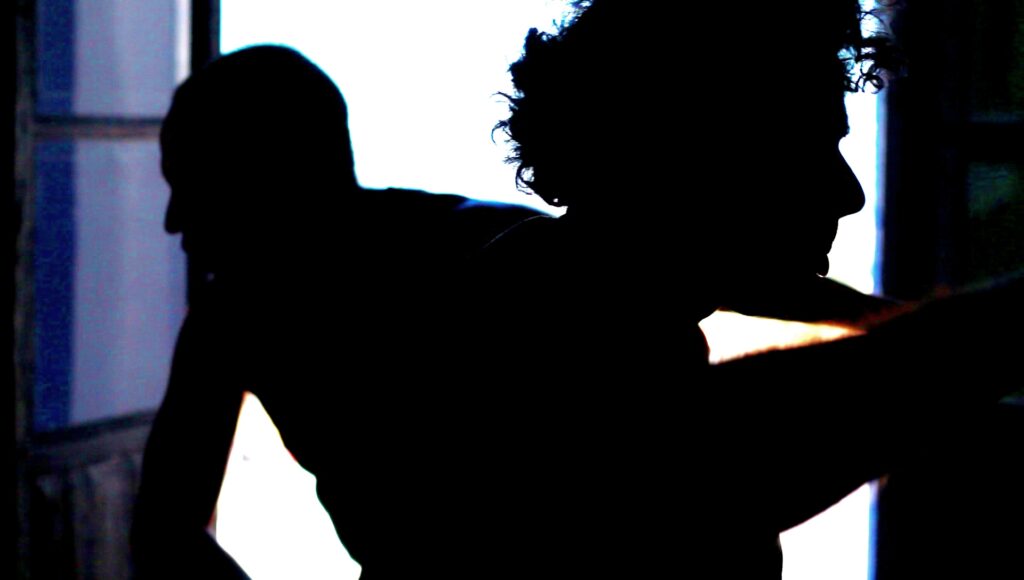Theater Activity (Spontaneous Theater) and Authentic Movement (5 Rhythms)
For Social Peace and Inclusion through Divergent Thinking and non-verbal communication.
Spontaneous theater
Spontaneous theater is where we collectively create from our emotions, sensations and life stories, anecdotes, dreams and stories of our daily lives and that are happening at the moment. The origins are in the theater of spontaneity by the creator of psychodrama Jacob Levy.
This theater is based on stimulating spontaneity and creativity.
It consists mainly of creating a space to develop play, listening and resonance between people through sharing their stories or experiences; it is in the game of the body and the emotions. that original forms are manifested and new possibilities of relationship arise that generates a responsible conscience and in turn us. It enables us to feel capable of intervening in our reality to transform it, from our own resources, either as individuals or as groups.

Psychodrama
Psychodrama, also created by Jacob Levy Moreno, is a method of approaching the individual, the family, the groups and the community, which had its origins in theater, sociology and psychology. From his work with children and marginal groups, his creator is developing his theory and his technique. It is developed in different areas: clinic, psychotherapy, pedagogy and community. The body, the game, space and time come together in a poetic way and contribute to creative freedom and the long-awaited spontaneity.
Dance “5 Rhythms” Authentic Movement.
This practice was created more than four decades ago by Gabrielle Roth, American artist and spiritual guide, in order to help us root our consciousness in the body, free ourselves from the inertia of physical, emotional and psychological habits and thus be able to live with full presence and connected to the world. The 5 Rhythms-Fluid, Staccato, Chaos, Lyrical and Stillness- are energetic and movement qualities that facilitate the conscious transit through various bodily, emotional and mental states and that promote an integral experience of the Being, as well as a state of internal stillness from which it is possible to perceive reality with greater awareness.
In Teatros del Cuerpo we start from the idea that we generally communicate in a logical way, this idea of the correct solution, of what we have learned, of the legacy that someone has passed on to us and that we have incorporated without contrasting it with our essential being, therefore we find automatic responses to deep concerns.
Many times we respond to certain situations in an automatic verbal way, politically correct or as we mentioned before, as we have been taught; others we respond as we believe we should respond in that situation, as if we were not the people involved, these forms structured and established through logical and automatic thinking, can lead us to generate a conflict in communication with what I do or with whom I interact. At Teatros del cuerpo we will call this “Cultural Preserves”.
As time passes, it is easy to turn what was once illusion and surprise into routine; it is easy for a brilliant resource to become a comfortable solution based on repetition, the ability to interpret a situation in very different ways, that is, the cleverness of giving multiple answers to the same question.
We will take as a path to abandon mental rigidity, stop clinging to specific or particular beliefs (Cultural Preserves) and allow the entry of various possibilities or response options to the same concern through these two arts.
Theater and Dance allow us to simultaneously work on the imagination -considered much more decisive in creative thinking than in intelligence and free ourselves from our own restrictions, enhancing these aspects that, among others, collaborate in the development of divergent thinking:

- Gain self-confidence: theater relativizes the concept that you can succeed and fail. It is understood then as a means of search and construction.
- Courage or risk: facing the fear of what they will say or think about us is achieved through action, in the performing arts we put a thought or feeling at the mercy of a bodily action and we can confront and share it.
- Perseverance: If we put our attention and our conscience on what makes it easier for us to get rid of our own obstacles, we can progressively free our capacity for original thought and establish new solutions in the face of any reality in a way that suits us, since each one of us Each of us is unique as a human being and possesses creative potential that can be developed without too much effort.
- Collective work in Collective Creation: is that created by a group or collective of people as a result of their collaboration. The theater as a collective fact leads us to add and confront capacities and creativities in search of many different answers that lead us to a fact, thought or joint action.
One of the main objectives of this work is to transform the “Cultural Preserves” from these artistic and creative forms, to bring this experiential experience to daily life or to the daily areas that we share; the possibility of incorporating a more honest listening towards oneself and therefore, with others and the environment, turning the imperative verbal discourse into a more reflective and questioning discourse; transforming it into a language and form of communication that leads us to the possibility of adding, reflecting and empathizing, resonating and co-building in a collective way.
What would happen if before responding to a stimulus, be it news, a work situation or in a conversation with another person, we first tried to understand and reconcile with our emotional movement: what do I feel? how do i feel Or then build with others from the sum of capacities and creativity, from a much more conciliatory and inclusive discourse.
How could we do this? As you see it? What do you think? These would be phrases that would come before: I think that…!! I think we should do this!!!
What if it was the body that was in charge of communicating how I am, what I want or what I think about it, and add?
Starting from this question, “Teatros del Cuerpo” proposes a search from a lateral thought in search of answers, impulses and reconstructions in the forms of communication and interaction with others and the medium or context with which we live and share.
– First the body speaks, then the word adds or enriches this body language.
The main objectives of “Teatros del Cuerpo” is to use the dance “Authentic Movement of the 5 Rhythms” and the theater together with Psychodrama as “Spontaneous Theater” to facilitate personal development and listening through self-knowledge, the possibilities and expressive capacities of the body as spontaneous, organic responses of our emotional world, which connect my feelings with my expression without going through the logic of acquired mechanical behavior “Authentic Movement”. And an improvement of listening and group communication with my environment.
As a divergent thought and starting point, we began after incorporating “Spontaneous Theater” tools for a more honest inner listening: a discovery of the emotions that live in us, in the present and in the lived stories that we share with others; experiencing and sharing in order to resonate brings us closer to the rest of the people and the world around us, generating a more empathic and therefore much more inclusive relationship; adding capacities and creativities, working associatively and collectively and obtaining pleasant sensations that catapult us to a sensation of peace.
In “Body of Theathre” the person is the instrument and the instrumentalist, all the tools that make us up are important: Word, Body, Voice and Emotion. They are the translators of sensitivity, expression, communication and thoughts.
The knowledge and enjoyment of the good use of these tools allow us to defend ourselves from our enemies: fears, inhibitions, tensions, blockages and a large number of enemies that hide behind our Essential Being.
Part of the way is to unlearn the programming and routines that prevent us from moving, from having more liberating and broad visions, breaking the molds that keep us imprisoned.
Theater, Dance and Psychodrama invite us to know, integrate and thus be able to apply the use of these tools that lead us to relearn while playing, opening new paths and taking risks.
Therefore, knowing ourselves is tuning the violin, the Destruction of our character through the Creative act is organically reading our inner music and giving way to our Essential Being from an honest communication towards ourselves as in our interpersonal relationships and of group: be ready to play the concert.
Body Theater as Divergent Thought
Elasticize our emotions by putting them at the mercy of the expressive, unblock the body so that it becomes the channel through which emotions transit and run through our interior, without obstacles, providing us with a pleasant energy and an organic movement that leads to an honest communication of what what we feel and want to communicate.
Theater and Dance provide us with the tools for expressive release and stretching of our body, allowing us to know our palette of emotions to get to know ourselves better and express ourselves more harmoniously and honestly.
Psychodrama and “Spontaneous Theater” through the work of sculptures, role work allows us to resonate, share, develop and re-matrix ourselves of our “cultural preserves” and personal that generate the blockages of our expressive forms.
Goals:
- Develop an empathetic and inclusive language of communication through body communication.
- Develop an inner listening
- Work on the concept of equality
- The expressive development of emotions through the poetics of the body.
- The enhancement of skills and creativity through theater and dance.
- Improvement in the expressive forms of the body and the word
- “Honest Communication”
Experience, resonate and share with the group the experiences of Spontaneous theater and the “Authentic Movement” to facilitate new expressive forms that help us develop both in personal growth and in a social context (family, social, work, leisure ties, etc.)
References
http://www.catedralibremartinbaro.org/pdfs/tesis-maestria-teatro-espontaneo-comunitario.pdf
https://www.morenomuseum.org/sites/default/files/Origen%20y%20desarrollo%20del%20psicodrama%20 -%20tesis%20de%20doctorado%20S%C3%A9rgio%20Guimar%C3%A3es.pdf
https://www.redalyc.org/journal/164/16449788003/html/
https://autogestionycooperativas.files.wordpress.com/2014/03/boal-augusto-el-arcoiris-del-deseo-1990.pdf https://www.redalyc.org/journal/164/16449788003/html/
http://psicologiaymente.com/clinica/psicodrama-jacob-levy-moreno https://www.interac.es/index.php/es/creatividad
